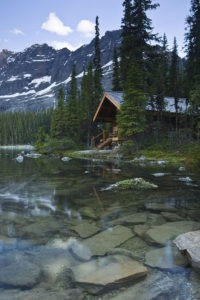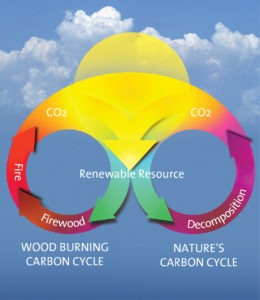Green Energy
Green Energy
Heating your home with a Pacific Energy wood stove or insert means choosing a green home heating solution.
- Since 1978 Wood heat science, and the concept of environmental responsibility, has been an essential part of Pacific Energy’s product development.
- In the 1980’s, Pacific Energy perfected the secondary burn catalytic -free system and became a recognized leader in clean burn technology.
- Meeting stringent 2020 environmental standards for the cleanest burn possible, Pacific Energy’s superior catalytic-free technology is available in all wood stoves and inserts.
Improving environmental performance and energy efficiency has continued to be Pacific Energy’s primary focus. Leading the industry just came naturally.
Cut greenhouse gas emissions and save money at the same time

Because new trees grow to replace those that die or are harvested, the burning of wood does not contribute to global warming and climate change the way the “fossil” fuels do. When oil, gas and coal are burned, the carbon they contain (which was buried millions of years ago) is oxidized to carbon dioxide (CO2), the main greenhouse gas. The use of fossil fuels releases ancient carbon, increasing the atmospheric concentration of CO2.
Wood also releases carbon when burned but its use is almost carbon neutral because trees absorb CO2 as they grow. When trees fall in the forest and decompose they release the same amount of CO2 as if they were burned. In other words, rotting is slow oxidation, whereas combustion in a wood stove is fast oxidation, with heat as the main by-product. When considered over the normal tree life cycle of about fifty years, heating with wood can be considered almost CO2 neutral, except for the energy used to harvest, process and transport the firewood.
In heating our houses with wood, we are simply tapping into the natural carbon cycle in which CO2 flows from the atmosphere to the forest and back. When wood is burned as a substitute for fossil fuels, the result is a net reduction in CO2 emissions. For every cord of wood used for home heating instead of oil, more than a tonne of carbon is kept out of the atmosphere. Plenty of households in rural areas and small towns could easily cut their carbon emissions by four tonnes each winter by substituting firewood for two tanks of fuel oil.

Old style wood stoves could heat a house but they wasted wood and made a lot of smoke. Since 1990 a new generation of wood stoves, furnaces, and heating fireplaces have been available. They can be easily identified because they are certified by the U.S. Environmental Protection Agency. These advanced technology wood burners not only make about ninety percent less smoke than old style ‘airtights’, they also burn about one-third less wood to do the same heating job.
Provided it is done responsibly, heating with wood can be a great way to be kind to the environment. As an added bonus, firewood costs a lot less than the alternatives for people who live outside large urban areas.
The Wood Heat Organization provides non-commercial advice on all aspects of home heating with wood.
This article was created by the Wood Heat Policy Institute. www.woodheat.org